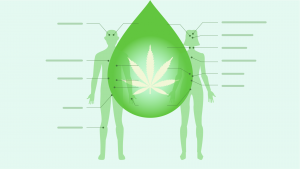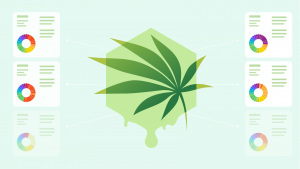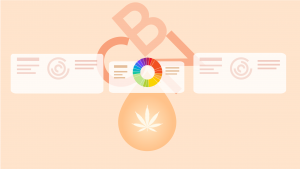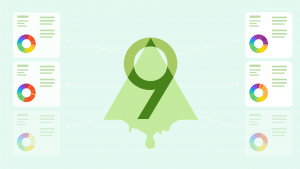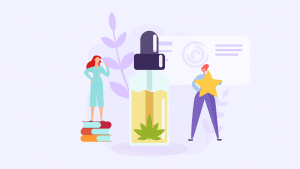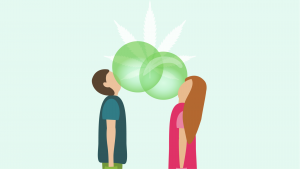
Evidence based
CBD Eye Drops: New Option For Glaucoma?
CBD has many different uses and can even be administered in the form of eye drops. Learn how and why CBD and cannabis terpenes are useful for eye health.
If you thought that they’re running out of innovative new uses for CBD, think again. Recently, companies have begun producing CBD-infused eye drops.
Many users report these eye drops improve pain from glaucoma and other ocular disorders.
What Are CBD Eye Drops?
CBD is pretty much the definition of a panacea. It has a huge number of applications and can be taken in many different forms. It can be ingested orally, vaped, rubbed into the skin, and can even be administered directly into the eyes.
CBD is short for cannabidiol. It’s just one of the many cannabinoids found in the cannabis plant.
CBD is usually derived from hemp, which is defined in the United States as any cannabis plant containing less than 0.3% THC.
CBD is useful because it can provide many of the medicinal benefits of medical marijuana without causing users to get high.
CBD eye drops are unique compared to standard eye drops. Most eye drops are based in saline, a saltwater solution. Saline solution is extremely similar to the liquid that makes up most of our “water” weight. Thus, saline is a great medium for delivering substances to the eyes safely.
However, CBD oil doesn’t dissolve well enough in saline, and CBD oil doesn’t mix with water well. Researchers have had to discover new ways to create saline-based products with CBD.
CBD Eye Drops: Challenges in Development
Researchers have been interested in creating CBD eye drops for quite some time. However, production was slow because of a fundamental challenge: CBD doesn’t mix well with water and is much better dissolved in oil or alcohol.
Alcohol is a terrible substance to put in your eyes, and water and oil don’t mix. This made it challenging to make a viable CBD eye drop solution.
For CBD to be useful in the eyes, it needs to be able to penetrate the eye’s tear layer. This tear layer consists mostly of water and thus, CBD oil cannot be used directly on the eye with much benefit.
Doing this might be useful for surface-level eye discomfort, but without traveling through the tear layer, it won’t be useful for managing conditions that affect the deeper layers of the eye. CBD must be dissolved in water if the compound is to reach the cornea, where it can provide benefits.
First Generation: Oil Based CBD Eye Drops
One of the first attempts to create a cannabis-based eye drop was made using light mineral oil. Very small amounts of THC (less than 0.1%) were dissolved in the carrier oil before being used on the eyes.
The results were initially somewhat positive. Patients showed a reduction in systolic blood pressure. This is an indicator of reduced ocular pressure, which can help bring relief to glaucoma patients. However, the product ended up being an irritant that counteracted most of its benefits.
Second Generation: Microencapsulated (Nano) CBD Eye Drops
A company known as GL Wellness was the first pioneer to successfully manufacture and market CBD eye drops. They use a unique formula to create a product that allows CBD to reach the cornea.
This is done by following a specific procedure. First, the CBD is extracted using the same subcritical CO2 process that high-end companies use to make their CBD.
For CBD eye drops, GL Wellness had to ‘microencapsulate’ their CBD at a size so small that it became soluble in water. This is essentially how any “water-soluble” or nano CBD products work.
By engineering CBD to be no larger than 300 nanometers and dubbing it a ‘nano-cannabinoid,’ GL Wellness produced a form of CBD that wasn’t just more bioavailable than usual; it was actually capable of being absorbed into the eye.
According to GL Wellness, their CBD travels not just to the cornea but through all the different layers of your eyes. It can allegedly reach all the way through to your optic nerve. This would make the CBD able to help provide relief from eye conditions of many different types.
Researchers have also studied the use of microemulsions and cyclic sugar molecules. When combined with cannabis, these substances can increase the bioavailability of different cannabinoids in the eye.
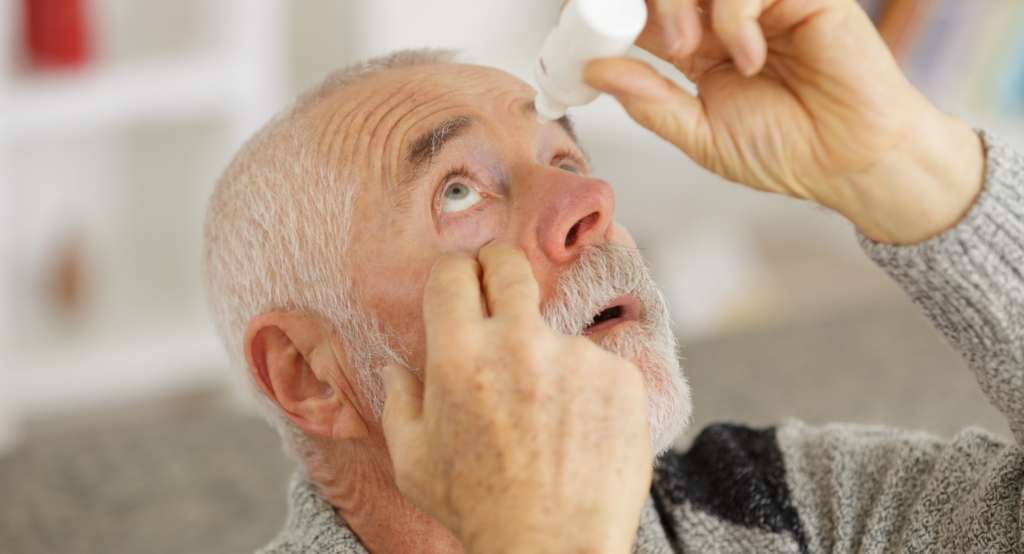
Other Ingredients Used In CBD Eye Drops
Some companies, including GL Wellness, include a number of other ingredients in their CBD eye drops. These different formulations allow for their eye drops to produce different benefits.
Some of the different ingredients include:
N-Acetyl-Carnosine (NAC)
This compound is the acetylated form of the amino acid L-carnosine. L-carnosine is naturally produced by the body but cannot penetrate the eye. The acetylated form, however, has been proven to penetrate through the different layers.
It has been used to help people with a number of conditions, including cataracts and age-related macular degeneration. Both L-carnosine and N-acetyl-L-carnosine have been shown to help reduce opacification of the eyes in the case of seniors developing cataracts.
Chamomile hydrosol
CH is a byproduct produced through the making of chamomile essential oil. It’s basically water infused with chamomile. It’s used in some CBD eye drops because it’s very soothing and helps to keep the eyes hydrated.
Cautions & Dangers of CBD Eye Drops
Cannabis has been tested for its ability to help reduce ocular pressure in patients with glaucoma. Most of the studies that were done on its effects focused on cannabis that was rich in THC.
However, some recent studies show conflicting information regarding the use of CBD. Some studies seem to suggest that CBD actually contributes to eye pressure. The American Academy of Ophthalmology reported this and acknowledged that this would mean CBD could actually worsen glaucoma.
These studies, however, are in conflict with the anecdotal evidence reported by most users of CBD eye drops, as well as animal studies. In most cases, people report improvements. Animal studies also showed improvements.
One issue that is often left unmentioned, however, is the difficulty that would be involved in managing ocular eye pressure with cannabis. To treat glaucoma, eye pressure needs to be managed 24/7.
Doing this with cannabis would be quite difficult, regardless of whether you’re smoking it or dropping it into your eyes.
Alex Straiker, Ph.D., acknowledges that this is a confusing situation. He says that the information available regarding CBD eye drops is conflicting at best and suggests that people wait until more safety data is available before using CBD eye drops.
What Are The Benefits of CBD for Eye Health?
CBD eye drops aren’t the best option for providing doses of CBD to the rest of the body — but they are great for delivering CBD directly to the eye. This may provide specific use for people experiencing ocular pain from glaucoma or as a side effect of medications.
There are a few specific cases where CBD can be beneficial to eye health:
- Glaucoma pain
- Nerve pain within the eye socket
- Retinal damage
- Ocular pain due to eye surgery or medication side effects
- Corneal pain from physical damage to the eye
- Macular Degeneration
CBD for Corneal Pain
Dalhousie University in Halifax was one of the first organizations to research the effects of CBD on the eye. Their research focused on treating corneal pain with the cannabinoid.
Although the experiments were done on animals, and certainly not in any ethical manner, the results seemed to suggest that CBD helps to reduce pain.
After the animals were tortured by having their corneas burned, cauterized, and doused with chili pepper extracts, they were given CBD to help reduce pain. All of the animals that were given CBD showed a reduction in pain.
Dalhousie researchers also experimented with a couple of other synthetic cannabinoids similar to CBD. These two compounds, known as CBD-DMH and HU308, showed a little bit of promise but produced nowhere near as much relief as CBD.
CBD for Macular Degeneration
Macular degeneration is a degenerative condition that affects some people as they grow older. Symptoms emerge as the cells in the retina begin to deteriorate. These cells are highly sensitive to light and are very important for the detection of brightness.
One of the main issues associated with macular degeneration is blind spots.
There are cannabinoid receptors found in the ocular region. When these receptors are activated, they can help to reduce inflammation, decrease vascular endothelial growth, and decrease intraocular pressure.
The result of this is a delay in the onset or worsening of macular degeneration. CBD can also help to reduce any physical discomfort associated with the issue.

How Do Cannabinoids Work?
Cannabinoids interact with receptors in the endocannabinoid system.
These receptors, especially the CB1 and CB2 receptors, are found in large numbers in parts of the brain and body that regulate pain signaling. Such areas include the dorsal root ganglia, the spinal cord, and the thalamus.
When the receptors in these areas are activated by cannabinoids, the result is analgesia: pain relief.
Cannabinoids can help reduce inflammation, encourage the body to produce endorphins (endogenous morphine, a potent painkiller produced by the body), and ramp up the production of anandamide, a hormone that helps to reduce pain signaling.
Other Painkilling Cannabinoids
CBD isn’t the only cannabinoid with painkilling benefits that could be useful for eye health. Most of these cannabinoids have even been shown to offer specific pain relief for the eyes. A common test for assessing the painkilling qualities of various compounds is to induce eye pain in rats and then try and treat it (terrible research, I know).
Nevertheless, this research has shown that other cannabinoids may be able to offer eye-specific relief as well.
These cannabinoids include:
Cannabis & Eye Health
Cannabis is a very convoluted plant in terms of how it works in the body. There are more than a hundred active compounds in the plant. Most of these are cannabinoids (like CBD and THC) and terpenes.
Each one of these compounds produces its own unique benefits. This makes it rather complicated to learn exactly which substance is causing which benefit.
Cannabis compounds have been proven to help increase the speed at which the eye responds to stimuli. Jamaican fishermen reported increased night vision during a study that was assessing the benefits of a cannabis tincture.
This is because of the cannabinoids binding with CB1 receptors in the endocannabinoid system. Once there, they would inhibit the production of a protein called NKCC1. This protein helps to transport chloride ions in and out of cells, determining the flow of electricity between them.
Inhibiting this protein seems to produce an increase in visual response timing. By reducing the concentration of chloride ions in the cells of the retina, they become more easily excited. The result of this is that they become more receptive to light.
This effect is dose-dependent, meaning that the amount of cannabis you use is directly correlated to the increase in visual acuity.
Researchers suspect that this might be useful for helping people manage a condition called retinitis pigmentosa. This disease is marked by the deterioration of retinal cells and can lead to blindness.
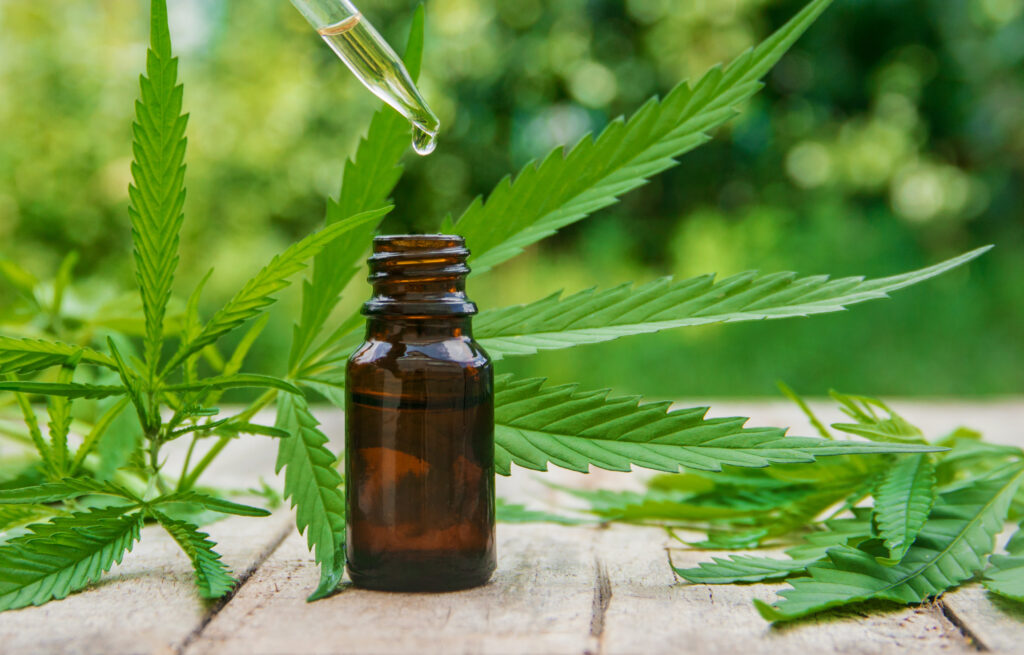
Final Thoughts: Do CBD Eye Drops Really Work?
Research has finally discovered how to make CBD eye drops that can penetrate the cornea.
This could potentially be useful for helping to treat ocular conditions — but we need more research to know for sure.
Some research seems to suggest that CBD can actually aggravate pressure in the eyes from glaucoma. This could, in theory, make the pain from this condition worse.
In either case, companies like GL Wellness have developed CBD eye drops that are already being adopted into mainstream eye care.
We recommend speaking with your eye doctor before trying CBD eye drops to help manage your condition.


